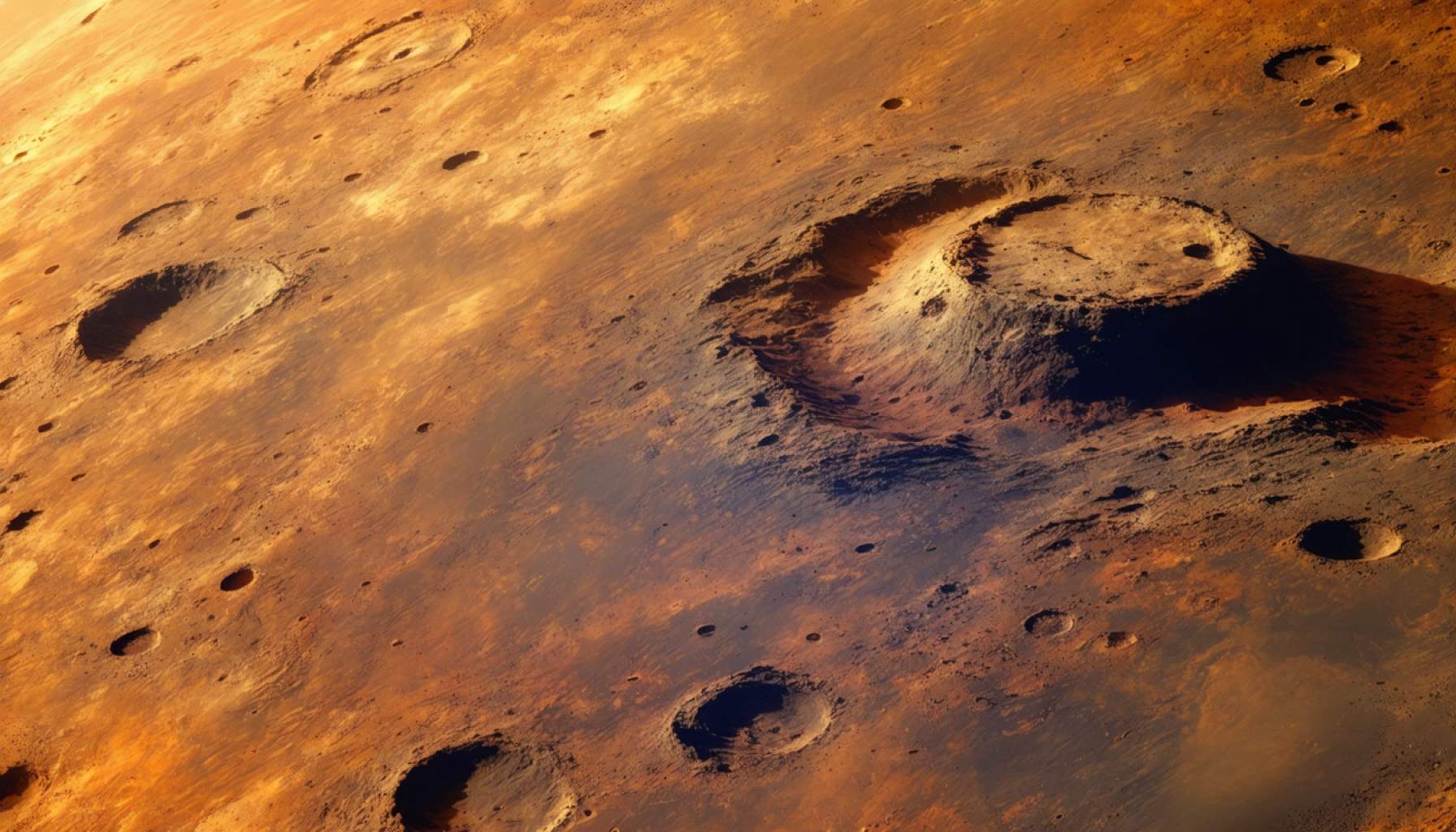- Mars’ surface conceals a rich geological history that suggests ancient climates and potential habitability.
- The dominant mineral in Martian dust, ferrihydrite, challenges the previous belief that hematite was prevalent.
- Ferrihydrite’s presence indicates Mars was once influenced by aqueous conditions before becoming the barren desert it is today.
- Spectroscopic evidence from orbiters and rovers supports this new understanding of Mars’ environmental evolution.
- This finding suggests a dynamic climate history, contradicting the notion of a consistently dry Mars.
- The discovery enriches the narrative of Martian history and raises intrigue about possible ancient life on Mars.
Beneath Mars’ familiar rust-red facade lies a geological tapestry woven with stories of ancient climates and possible habitability. The Martian dust, a pervasive reddish blanket, harbors a mineralogical surprise—ferrihydrite, not hematite, stands as the dominant iron oxide phase. This revelation, painted with spectroscopic evidence from orbiters and rovers, reshapes our understanding of the planet’s environmental evolution.
Imagine the Martian landscape, parched and frigid in the present, yet once marked by the murmurs of flowing water. The persistence of ferrihydrite, a poorly crystalline but stable mineral, suggests its formation during a time when Mars was more akin to a terrestrial winter wonderland. It signals a narrative where the Red Planet transitioned from a cold, wet world—where oxidative conditions favored ferrihydrite’s birth—to the barren desert we see today.
Spectral signatures from orbit coupled with rigorous Earth-based laboratory experiments reveal that this mineral steadfastly resists full transformation into its more crystalline cousins. This defies previous assumptions that hematite, born of anhydrous processes, was king. Instead, ferrihydrite’s endurance hints at Mars once nurturing aqueous environments, now relics hidden beneath the dust.
Such insights breathe new life into the Martian story, challenging the concept of constant dryness and hinting at a more dynamic climate history. For those fascinated by the prospect of extraterrestrial life and planetary evolution, this finding not only reshapes Mars’ ancient portrait but also fuels curiosity about what lies beneath its dusty veil. The hidden chapters in Martian soil could reveal whether life ever found a foothold on our planetary neighbor.
This Surprising Mars Mineral Discovery Could Reveal Secrets of Ancient Martian Climates!
How-To Steps & Life Hacks: Analyzing Martian Soil from Earth
1. Understand Spectral Analysis Basics: Spectral analysis involves examining light reflected or emitted by surfaces to determine their composition. Use Earth-based laboratory tools to mimic this for Mars samples.
2. Leverage Rover Data: Utilize data from NASA’s rovers, such as Curiosity and Perseverance, which carry advanced spectrometers that help detect minerals like ferrihydrite.
3. Simulate Martian Conditions: Create Earth analog environments that replicate Mars’ temperature and pressure to analyze soil sample behaviors and transformations over time.
4. Collaborate with Experts: Work with geochemists and planetary scientists to interpret data and draw insights about Mars’ climatic history.
Real-World Use Cases
– Space Mission Planning: Understanding Mars’ geological past could refine search strategies for evidence of past life.
– Astrobiology Research: Explore possibilities of life existing under past conditions suggested by the presence of ferrihydrite.
– Climate History Modeling: Develop models of Mars’ climate evolution to predict possible future planetary transformations.
Market Forecasts & Industry Trends
– Rise of Space Exploration Investments: Increased funding for space missions indicates growing interest in planetary exploration and terraforming technologies.
– Tech Development in Spectroscopy: Advances in spectrometric tools, both in spacecraft and laboratories, are expected to enhance mineral detection abilities.
Reviews & Comparisons
Current technology allows us to distinguish between different iron oxides on Mars. Comparing instruments like Mössbauer spectrometers and X-ray diffractometers helps refine data accuracy.
Controversies & Limitations
While the discovery of ferrihydrite on Mars is revolutionary, it’s important to consider:
– Data Interpretation Challenges: Spectral overlaps can complicate mineral identification.
– Sample Limitation: Current findings are based on limited direct samples; broader Mars missions might alter our understanding.
Features, Specs & Pricing of Spectroscopic Tools
– Portable Spectrometers: Key features include wavelength range, resolution, and light source types. Prices vary from a few thousand dollars for basic models to over a hundred thousand for advanced versions.
Security & Sustainability
– Eco-Friendly Analysis: Ensure Earth labs use sustainable energy sources to reduce the environmental footprint of space technology research.
Insights & Predictions
– Future Discoveries: As exploration technology improves, expect more discoveries that challenge traditional views of Mars’ geological and atmospheric history.
Tutorials & Compatibility
For those working with spectral analysis tools, online tutorials offer valuable step-by-step guides. Ensure compatibility of software tools with various spectrometers.
Pros & Cons Overview
Pros:
– New insights into planetary climates and potential for ancient life.
– Enhanced understanding of Mars’ environmental transformation.
Cons:
– Current technology has limitations in spatial resolution and accuracy.
– Data interpretations can vary widely among scientists.
Actionable Recommendations
– Stay Informed: Keep abreast of new Mars mission results through credible sources like NASA and ESA.
– Engage in Citizen Science: Platforms like Zooniverse allow enthusiasts to contribute to data analysis and discovery.
Stay curious, and keep exploring the vast possibilities that the Martian surface holds for our understanding of geological and astrobiological processes!
For more about the latest in space exploration, visit NASA and ESA.
